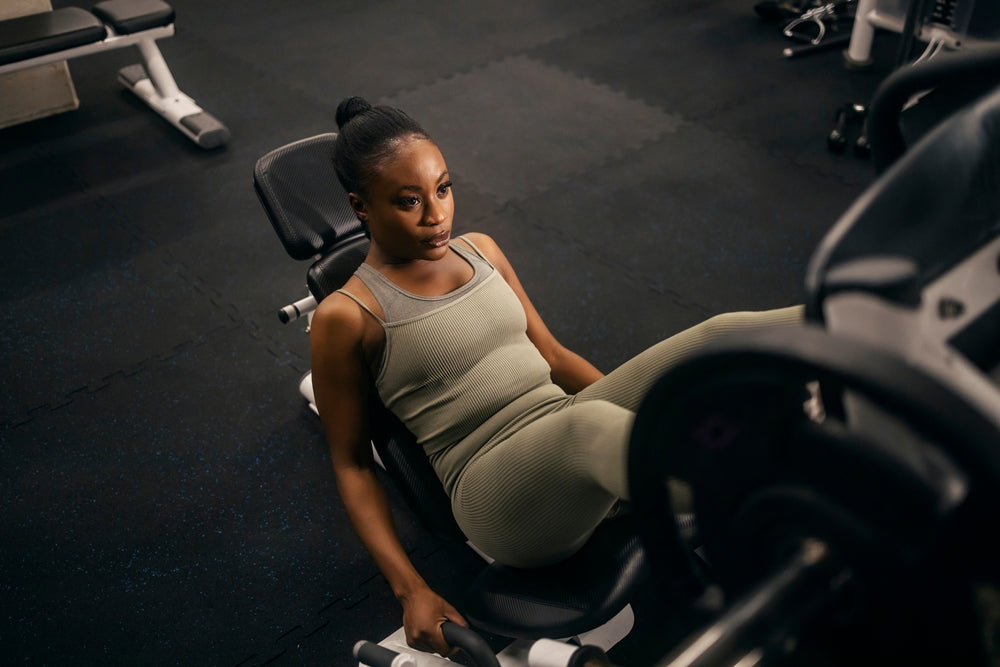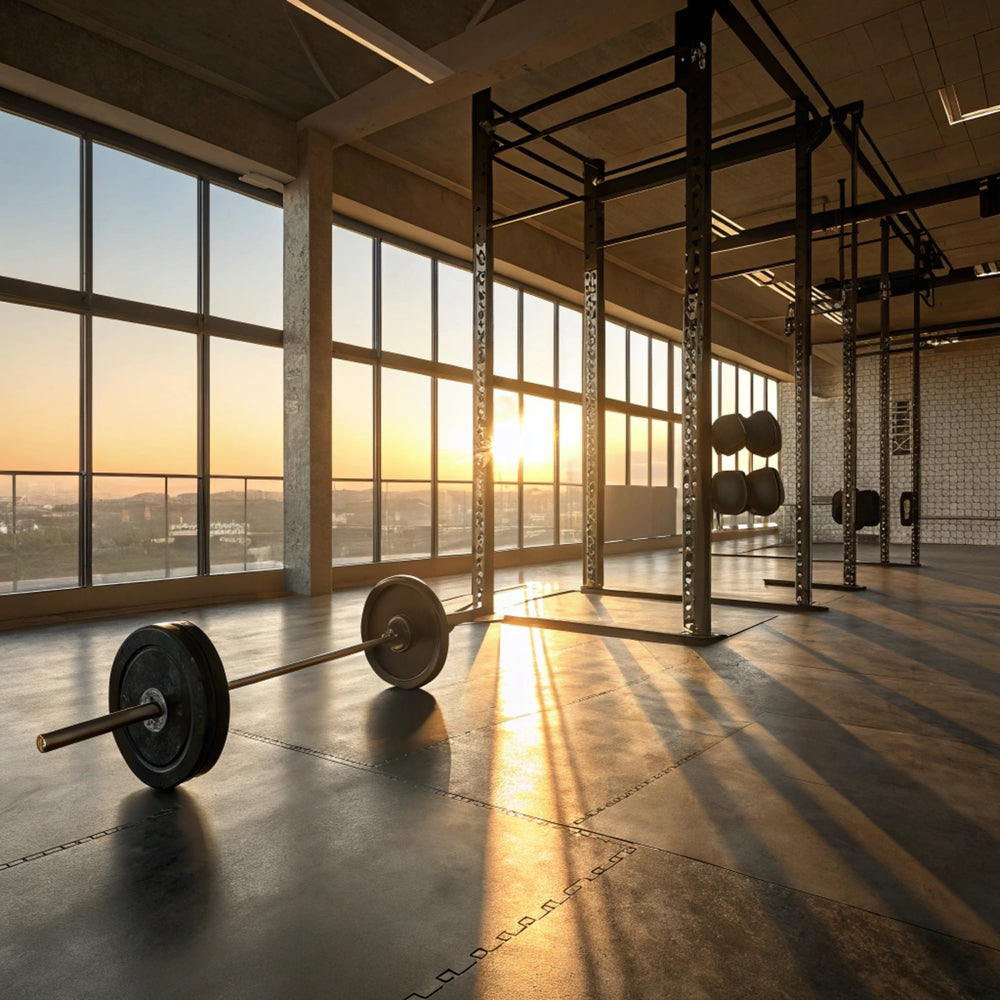Leg press for home: A good idea?

Leg press for home – The ultimate guide for your holistic leg training
A well-trained lower body is not only visually appealing, but also essential for health, stability, and performance. Leg muscles make up around 50% of our total muscle mass and form the foundation for virtually every movement in everyday life and sports. A leg press for your home is the ideal training device for strengthening your legs effectively, safely, and sustainably.
In this guide, we answer all the important questions about leg presses, show you the benefits, dispel myths, and explain why it's worth having one in your home. We also give you tips on proper use, training plans, and purchasing decisions. By the end, you'll know exactly which leg press is right for you and why it can revolutionize your training.
Why a leg press is a good idea for home use
Many fitness enthusiasts know the problem: Not everyone has the time or desire to go to the gym regularly. Long commutes, crowded gyms, and fixed opening hours often make training complicated. With your own leg press, you can bring the gym feeling right into your home and enjoy numerous advantages. Firstly, you can train with complete flexibility whenever it fits into your daily routine—whether it's early in the morning, during your lunch break, or late in the evening. Secondly, you don't have to wait and can concentrate fully on your workout. In addition, a leg press provides an effective workout for your legs. It activates large muscle groups such as the quadriceps, hamstrings, glutes, and calves. The guided movement significantly reduces the risk of injury compared to free exercises such as squats, which is a decisive advantage, especially for beginners or people with back problems.
Don't forget: A leg press is also a worthwhile investment in the long run. While gym memberships are charged monthly, a home-based system requires a one-time purchase, and you can then train independently and for free.
How do leg presses work at home?
Many people wonder whether a classic studio-style leg press can even be used at home. The answer is yes! Today, there are numerous models designed specifically for home use. Compact leg presses require less space, are easier to handle, and yet robust enough to allow for an intense workout. Those looking for even more versatile training can opt for multi-presses or power stations that combine several exercise options in one machine. One example is the ATX® Lever Arm Squat Pro - Viking Press .
But even if you don't have a dedicated machine, you can still simulate the movement pattern of a leg press. Resistance bands, dumbbells, or even bodyweight exercises like squats and lunges offer a good alternative. Of course, they don't achieve the same precision and safety as a real leg press, but they're a viable option for small apartments or as a starting point.
Which machine is suitable instead of a leg press?
Sometimes there isn't enough space or budget for a traditional leg press. In these cases, it's worth switching to alternative equipment and exercises that target similar muscle groups. Barbell squats are a classic and extremely effective, but they require proper form and core tension. Lunges, step-ups, and Bulgarian split squats are also excellent ways to strengthen your legs and glutes.
Nevertheless, the leg press remains the first choice for many because it provides a clear, guided movement and is therefore very suitable for both beginners and advanced users.
How many kg is good for leg press?
One of the most common questions is: How much weight should you use on the leg press? The answer depends largely on your personal fitness level and your goals. For beginners, it's recommended to start with 30–50% of your body weight to learn the movement properly and allow your muscles to acclimate. Advanced users usually work with 100–200% of their body weight, as the leg press is a very stable and safe exercise. Ambitious strength athletes who want to build muscle can even lift 300% or more of their body weight.
More important than the sheer weight, however, is proper technique. Only by performing the exercise with control and through a full range of motion can you achieve long-term success and avoid injury. So be careful not to increase the weight too quickly and give your body time to get stronger.
Which leg press is best?
Choosing the right leg press depends largely on your individual needs. There are three main types. The horizontal leg press is particularly gentle on the joints and saves space, as the movement is parallel to the floor. It's ideal for beginners and anyone who values safe and comfortable exercise. The incline leg press (45 degrees) is probably the most well-known version in the gym and allows you to lift heavy weights. It offers a very intense workout and is perfect for building muscle. Finally, the vertical leg press places a particularly high strain on the body, saves space, but requires technically sound execution.
In our online shop, you'll find high-quality models of all kinds . Whether you're looking for a compact solution for your apartment or a professional device for your own home gym – we have the right solution.
Benefits of the leg press at home
A leg press offers a multitude of benefits that go far beyond pure muscle growth. Not only does it build strong legs, but it also improves your posture and stabilizes your knees and hips. Regular training strengthens tendons and ligaments and prevents injuries in everyday life or during sports. Furthermore, the leg press is a real calorie burner, as large muscle groups work simultaneously, resulting in high energy expenditure.
Another advantage: You can vary your foot position and thus target different muscles. A narrow stance strengthens the quadriceps, while a wider stance places more strain on the adductors and glutes. Positioning your feet higher or lower on the plate also changes the load. This makes the leg press an extremely versatile training device.

Common mistakes on the leg press
As effective as the leg press is, many users make mistakes that can reduce their training success or even lead to injury. One of the most common mistakes is fully extending the knees at the end of the movement. This places unnatural strain on the joints and should be avoided at all costs. It is equally important to press your lower back firmly against the backrest throughout the entire movement to prevent your pelvis from lifting. A movement amplitude that is too small – i.e., stopping the movement before your knees have bent at least 90 degrees – also reduces the training effect. Also pay attention to controlled execution. If you move the weight too quickly or allow your knees to drop inwards, you not only risk reduced effectiveness but also injury. Quality is clearly more important than quantity here.
Training plan with the leg press
An effective leg press training plan should be tailored to your personal goals. For beginners, we recommend three sets of 12–15 repetitions with moderate weight. The goal here is to learn the technique and acclimate your muscles to the strain. Advanced users can incorporate four sets of 8–10 repetitions with heavier weight to specifically stimulate muscle growth. Those looking to develop maximum strength should work with five sets of 5–8 repetitions and very heavy weights. It's best to complement the leg press with other exercises such as leg curls, leg extensions, calf raises, and functional movements like step-ups or lunges. This ensures that your legs are strengthened holistically.
Health benefits of strong leg muscles
Strong legs are far more than just an aesthetic advantage. They support the entire musculoskeletal system and ensure stable posture. People with strong legs reduce the risk of back and knee problems, as the muscles stabilize the joints better. Daily performance also increases: climbing stairs, walking for long periods, and engaging in sporting activities are easier. Especially in old age, strong leg muscles play a key role in maintaining mobility and quality of life.
Tips for buying a leg press
Before choosing a leg press, you should consider a few factors. First, consider how much space you have available and whether you're looking for a compact machine or a larger solution. Pay attention to the machine's maximum weight capacity, its build quality, and the ability to adjust the weight. Ergonomics also plays a major role – a comfortable backrest and a non-slip footplate are crucial for safety and comfort.
At motion sports, you'll find a wide selection of leg presses tailored precisely to these needs. If you're looking for a leg press for your home, we recommend the following models:
- ATX® Leg Press 45° - Leg Press Classic : Highly resilient, very intuitive to use.
- ATX® Compact Leg Press Combo - Hackenschmidt squat machine : Compact, space-saving, two leg exercises in one device.
Conclusion: Why the investment is worthwhile and a good idea
A leg press for your home is the perfect addition to your workout. It offers safety, versatility, and long-term success. It's especially essential for people who value strong legs, healthy joints, and effective muscle growth. Whether you want to build muscle mass, improve your fitness, or simply stay healthy and mobile – with a leg press, you'll achieve your goals faster and more safely.
Discover our selection of leg presses now and let us help you make your decision!
Note: This blog post is for informational purposes only and is not a substitute for professional training advice. Consult a professional if you have any health concerns.


Leave a comment
All comments are moderated before being published.